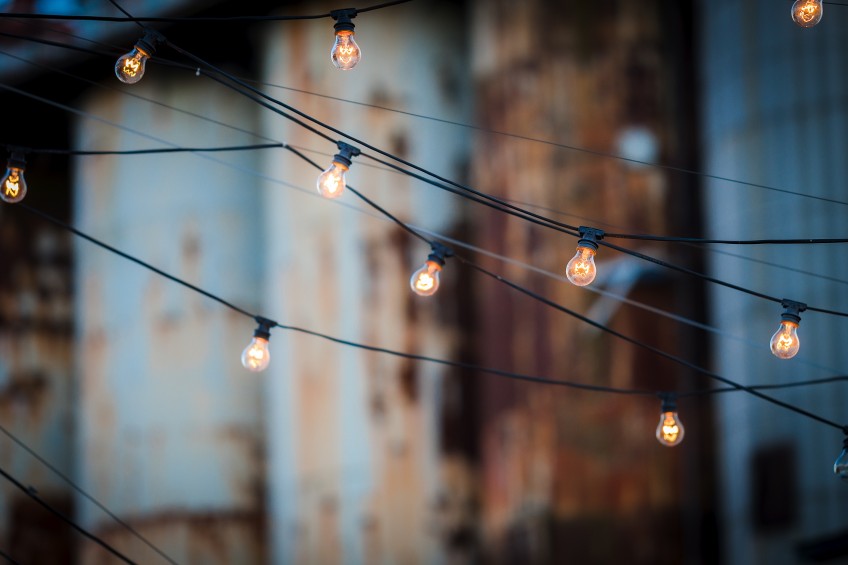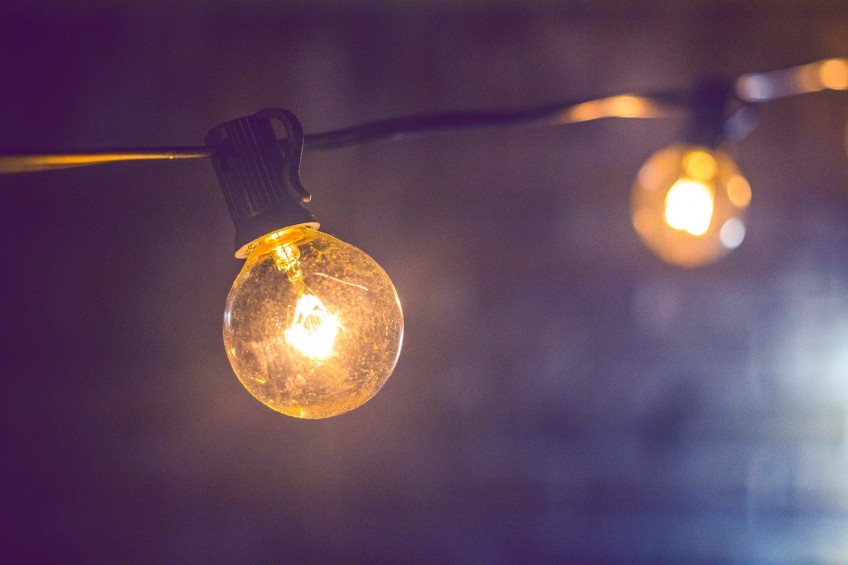Introduction
35% of the typical American home’s energy use goes toward appliances, electronics, and lighting. Thankfully, recent improvements in LED lighting, TVs and monitors, and other appliances and electronics have made it possible to decrease that percentage in your home today. In this article, we’ll teach you about lighting efficiency so you can minimize your energy impact and costs at home.
Step by step
According to U.S Energy Information Administration data from 2009, 35% of the typical American home’s energy use goes toward appliances, electronics, and lighting. Thankfully, in the past 8 years since that data was collected many improvements in LED lighting, TVs and monitors, and other appliances and electronics have made it possible to decrease that percentage in your home today. In this article, we’ll teach you about lighting efficiency so you can minimize your energy impact and costs at home.
Efficacy what?
The lighting geeks of the world at some point decided the efficiency wasn’t a good enough term for them, so they came up with efficacy. Efficacy is kind of like miles per gallon in your car. It is a measure of efficiency specifically measured in lumens per watt. Lumens are a measure of light output. Watts is a measure of electric power. Dividing the two together tells you how efficient your light source is.
In our article about lighting technology, we touch on how various technologies have different levels of efficiency. The table below shows typical efficacy for the three most common residential lighting technologies, along with their power draw for a typical 900 lumen light bulb, and the estimated cost to run for a year
|
Technology |
Efficacy (lumens/watt) |
Wattage for a common 900 lumen bulb |
Cost to run for a year 1 |
|
Incandescent |
15 |
60 |
$8.76 |
|
Fluorescent |
70 |
13 |
$1.90 |
|
LED |
110 |
8.5 |
$1.24 |
1 assumes 4 hours a day of runtime at an electric rate of $0.10/kwh. Actual cost will vary based on your usage and electric rate.
You can see that the efficiency of Fluorescent and LED is far superior to Incandescent. While the largest savings is in getting away from incandescent, LED has become the best option to do so given recent drops in prices and improvement in technology.
…but aren’t they expensive?
If you’re fiscally minded, you are likely looking at the chart above and saying “Ok, this is great….but aren’t the LED lamps super expensive? What will it cost me to get those savings?”. This is a great question since we’re all about stewardship at Propsee and that includes our finances as well as the energy and environmental impact.
Let’s look at the cost vs. savings for a few different options of each of the above bulbs, all from the same manufacturer. While we’re looking at this, we’re going to consider the life of the bulb as well, since you’ll have to buy more of the cheaper lamps over a given period given their shorter lifespan. We’re also going to consider a 7 year period, since that is the length of time before the average home is sold. Keep in mind that since LEDs last up to 20 years, the cost per year would actually be lower over a longer period of time.
|
Technology |
Purchase Price per Bulb |
7 Year Energy Cost |
7 Year Bulb Purchase Cost |
Total 7yr Operating Cost |
|
$0.81 |
$61.32 |
$8.24 (10 bulbs) |
$69.56 |
|
|
$2.59 |
$13.29 |
$2.59 (1 bulb) |
$15.88 |
|
|
$1.94 |
$8.69 |
$1.94 (1 bulb) |
$10.62 |
In this case, LED is actually the cheapest cost to purchase as well as run! This is becoming more and more common as manufacturers seek to compete on the superior LEDs and abandon the compact fluorescent market. The Incandescent is still cheapest but it is becoming increasingly difficult to find and eventually will cost more simply due to supply. To top it off, you’d have changed that light 10x over the 7 years, so there’s a convenience factor that we didn’t put a dollar value on. There really is no downside to LED vs. the other options when evaluating on cost.
Environmental Impacts
Energy efficiency isn’t just about savings a few dollars on your electric bill. LED lighting have also made it easier than ever to reduce your environmental footprint.
If you are like most people, you get your electricity from the normal utility grid. This grid is powered by a mix of power including coal plants, nuclear, gas plants, and renewable sources (hydro, wind, solar, etc.). Depending on what state you’re in, this mix results in a CO2 emission factor. A full list by state can be found here. In addition to CO2 output, electricity production produces a variety of other pollutants. While this industry is carefully regulated and there is a valid debate about the validity of man-made climate change, there is no doubt that it does have an environmental impact that we want to steward well.
When you reduce your energy use by utilizing more efficiency lighting, you not only save yourself money, but you have a direct impact on reducing the environmental impact of your state’s electricity production.
So what if you go with renewable power? Whether you choose an electricity plan that uses 100% renewable power or go with solar panels directly on your own home, efficiency is still a really good thing. Let us explain…
Suppose you have 20 light bulbs in your house that were all incandescent using 60W each. The total power of lighting would be 1,200 watts, or 1.2 kilowatts (KW). If you decided to put solar panels on your house that would allow you to produce enough power for all of these running at the same time you’d need a solar panel system that produces 1.2KW. Given that solar systems cost about $2,000-3,000/KW it would cost you about $3k, for the system.
Now let’s say you first go in and buy the efficient LEDs possible at the cost of $1.94/ea we have listed in our example above. This will cost you a premium of $1.13/ea, or $22.60. Now, instead of having 1.2KW of lighting you’ve reduced this down to only 0.17KW! Using our estimated cost of $2,500/KW for the solar system you now have a cost of $425 to offset this lighting power. That’s a savings of over $2,500 compared to an extra investment of merely $22 for more efficient bulbs!
Whenever you are considering renewable electricity like solar panels for your home, it is best to optimize your efficiency first before offsetting the remaining power with power production. Any efficiency upgrade should be compared to the cost of the renewable power and as long as it is cost effective, efficiency should be pursued before offsets. LED lighting will always meet this criteria.
Ok, ok…so why would I ever buy incandescent?
In our article about the various lighting technologies, we cover some of the pros and cons to each. The only real pro that incandescent has over the other two is its perfect dimming capability and warm color temperature. Let’s look at a quick story to demonstrate our point….
Imagine your favorite romantic restaurant. White tablecloths, dark wood, soft music, good wine, and that special someone….but wait a second, why does the lighting look like your office cube?!!? Harsh light brings out every line and wrinkle on your face and bathes the entire setting in a sterile wash more reminiscent of a hospital waiting room than the cozy place you envisioned. You look up, and sure enough there are ugly troffer fixtures set in to the drop ceiling with long fluorescent tube lights. Poor lighting ruined the whole evening because of their struggle to dim and high color temperature.
Of course, this would never happen, since the restaurant most likely has softly dimmed incandescent lights. They may even have those really cool clear ones that let you see the filament glowing inside each bulb.
While LED technology is making improvements in both dimming and color temperature, it still isn’t 100% as good as incandescent. Therefore, if you have a lightly used space like your formal dining room with a chandelier, it may make sense to put in incandescent bulbs rather than fluorescent or LED. Otherwise, there’s really not much of a reason to use anything but LED!
Summary
The example we discussed is for what may be the most common light bulb in the world so pricing and technology has made tremendous strides. Some of the less common lights may not have a good LED alternative and those that are available will be very expensive. In these cases you may consider sticking with the standard, but for 99% of applications we’d recommend you go with LED to minimize your cost and energy consumption.
Interested in learning more about lighting? Check out our articles on lighting technology and light bulb shapes and sizes!




